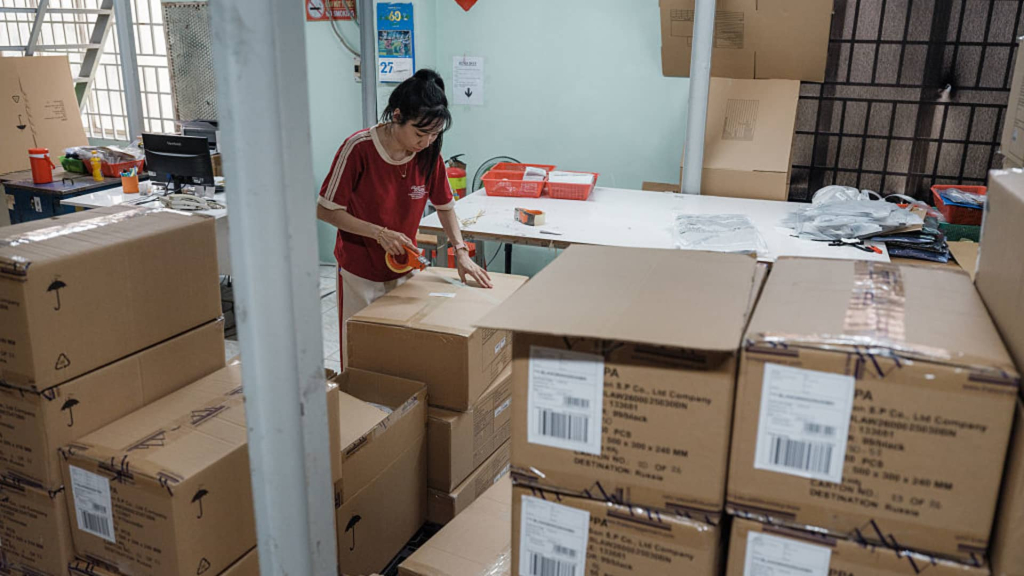The retail sector is expressing relief as it seems to have evaded the most severe implications of potential tariffs on Vietnamese goods.
However, industry leaders are voicing concerns that the recent tentative trade agreement announced by President Donald Trump might still prove detrimental to business operations and could dampen consumer purchasing behavior.
“This is a significant improvement from where we stood on Liberation Day,” commented the CEO of a well-known consumer brand in a statement to Finance Newso, referencing Trump’s announcement that tariffs on imports from Vietnam would be set at 20%, a reduction from the 46% duty initially proposed on April 2 and later put on hold. The new tariff would still be substantially higher than the existing 10% rate.
Another industry executive labeled the development as “bad,” although they acknowledged that a 20% tariff is preferable to the previously suggested 46% rate, regardless of how impractical the initial proposal seemed.
“It seems Trump is in need of some ‘positive’ news,” remarked a third executive. “Change is inevitable, so let’s see if this turns out to be a permanent solution.”
The president’s announcement arrived just days before the expiration of a 90-day pause on the steep tariffs that he introduced in April, as the administration seeks deals with numerous trading partners. However, details regarding the implementation timeline of the agreement with Vietnam or the final tariff rates remain unclear.
In the interim between the announcement of the initial tariffs and the recent news, executives in the apparel and footwear sectors expressed anxiety over the potential financial repercussions of tariffs on Vietnamese imports, which could rival the cumulative duty of 55% faced by Chinese goods.
Prominent American retailers such as Gap, American Eagle, and Nike have shifted their production focus away from China to mitigate the effects of both high tariffs and regional geopolitical instability.
These companies have increasingly turned to Vietnam, where factories—some owned by Chinese firms—produce goods that mirror the quality and pricing of Chinese products. Additionally, manufacturers have begun operations in other Southeast Asian nations such as Cambodia, Bangladesh, and Malaysia, which faced proposed tariffs of 49%, 37%, and 24%, respectively, under Trump’s original plan but currently maintain a 10% duty.
According to the American Apparel & Footwear Association, Vietnam has risen to become the second-largest supplier of footwear, apparel, and accessories imported into the United States. Furthermore, forecasts from the Footwear Distributors and Retailers of America suggest that Vietnam could secure the position of the leading U.S. shoe supplier by 2025.
Had the suggested 46% tariff on Vietnamese goods been implemented, it could have significantly negated the industry’s progress in moving production away from China. Many businesses are relieved that the new agreement positions the tariff at 20%, indicating a possible future for similar agreements with Cambodia, Malaysia, and Bangladesh.
“The 20% rate is a breath of fresh air,” stated Sonia Lapinsky, a partner and managing director at AlixPartners, who provides counsel to fashion companies. “There’s a sense of hope that this is manageable, which is encouraging. The outcomes are not catastrophic, but there are still serious implications to consider.”
While many companies have strategies to mitigate the effects of tariffs, such as collaborating with suppliers to share cost burdens, a number of retailers, including Nike, are preparing to increase prices to maintain their profit margins. The impact of these price adjustments on consumer spending remains uncertain, as the effects will take time to permeate through the supply chain.
Previous pricing models created by AlixPartners for Finance Newso examined potential price increases for Vietnamese-manufactured sweaters and shoes based on Trump’s proposed tariffs. For instance, under a 10% tariff, the price of a $95 pair of men’s shoes could rise to $102.42, reflecting a $7.42 increase. A 20% tariff would entail an even steeper price rise.
Concerns persist among executives that a tariff of this magnitude could harm both businesses and consumers. Paul Cosaro, CEO of Picnic Time, which supplies major retailers like Target, Kohl’s, and Macy’s, reflected on how a 20% tariff would have been met with discontent if it had been the original proposal in April.
“While it may appear to be a reduction from a potential 46% levy to 20%, it translates into higher expenses for consumers, leaving them with less disposable income for other purchases like picnic baskets and coolers,” Cosaro explained, clarifying that he raised his prices between 11% and 14% earlier this year to counteract the impact of the increase in tariffs from China.
“This does not bode well for consumers. Ultimately, it equates to increased costs… and I don’t believe this is positive news for anyone involved.”


























